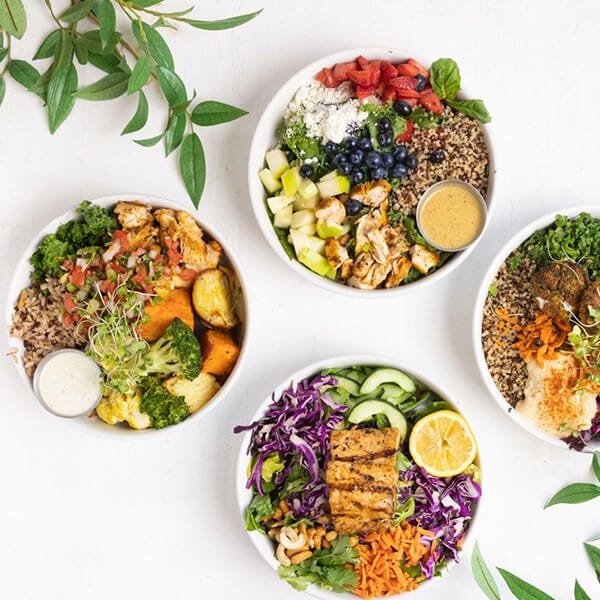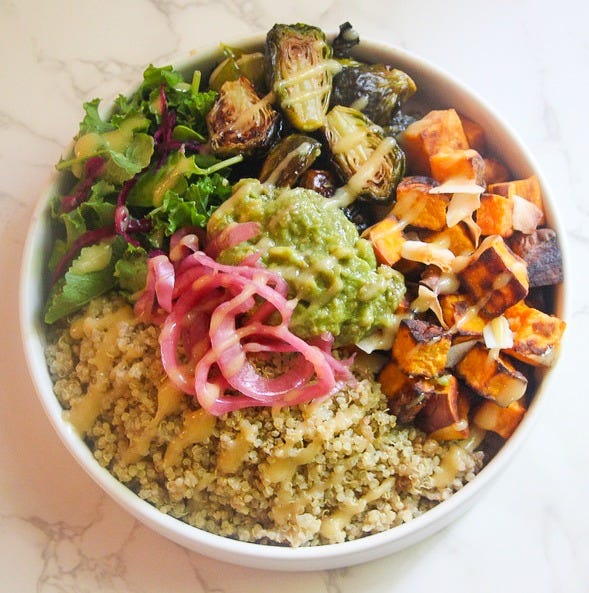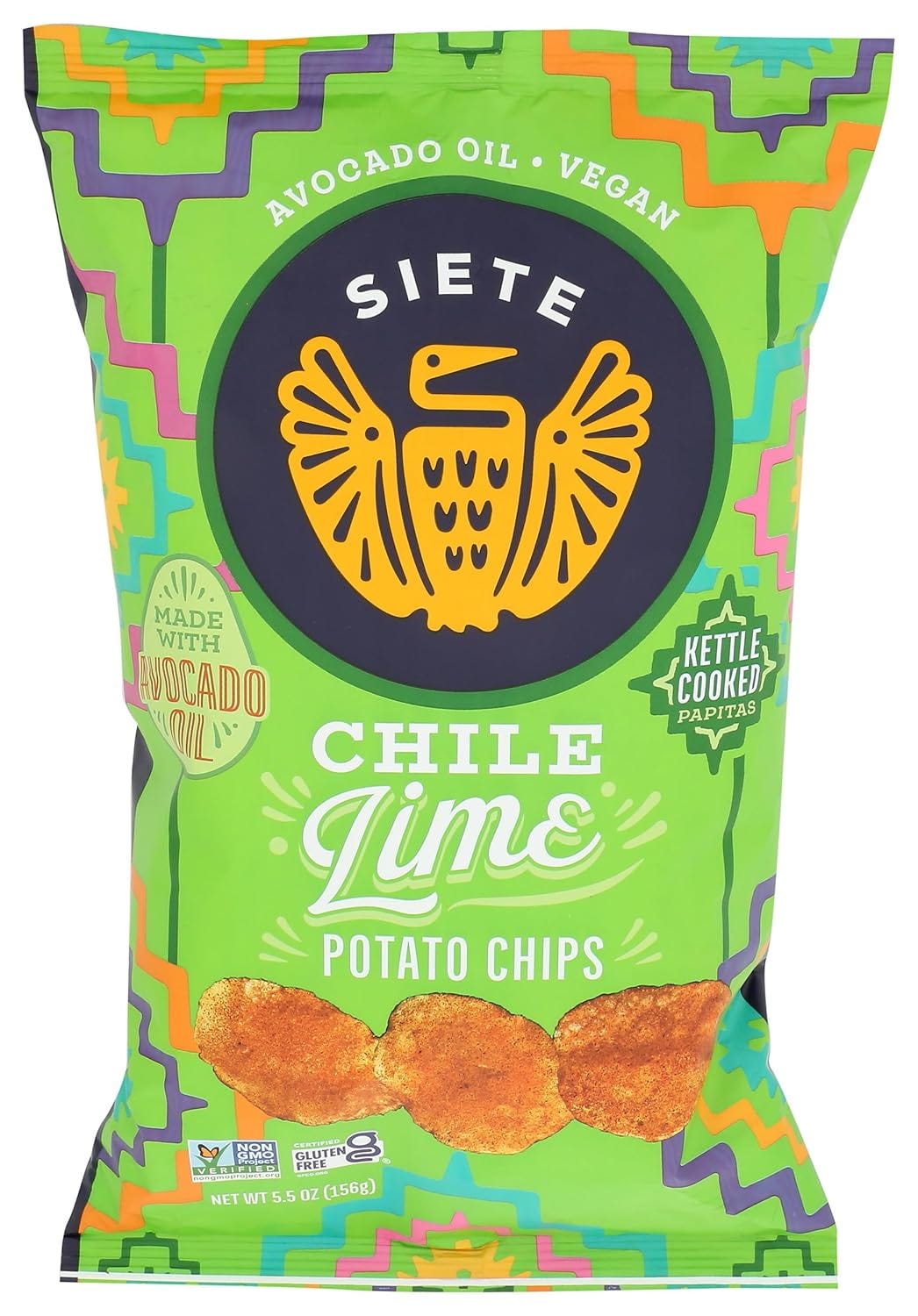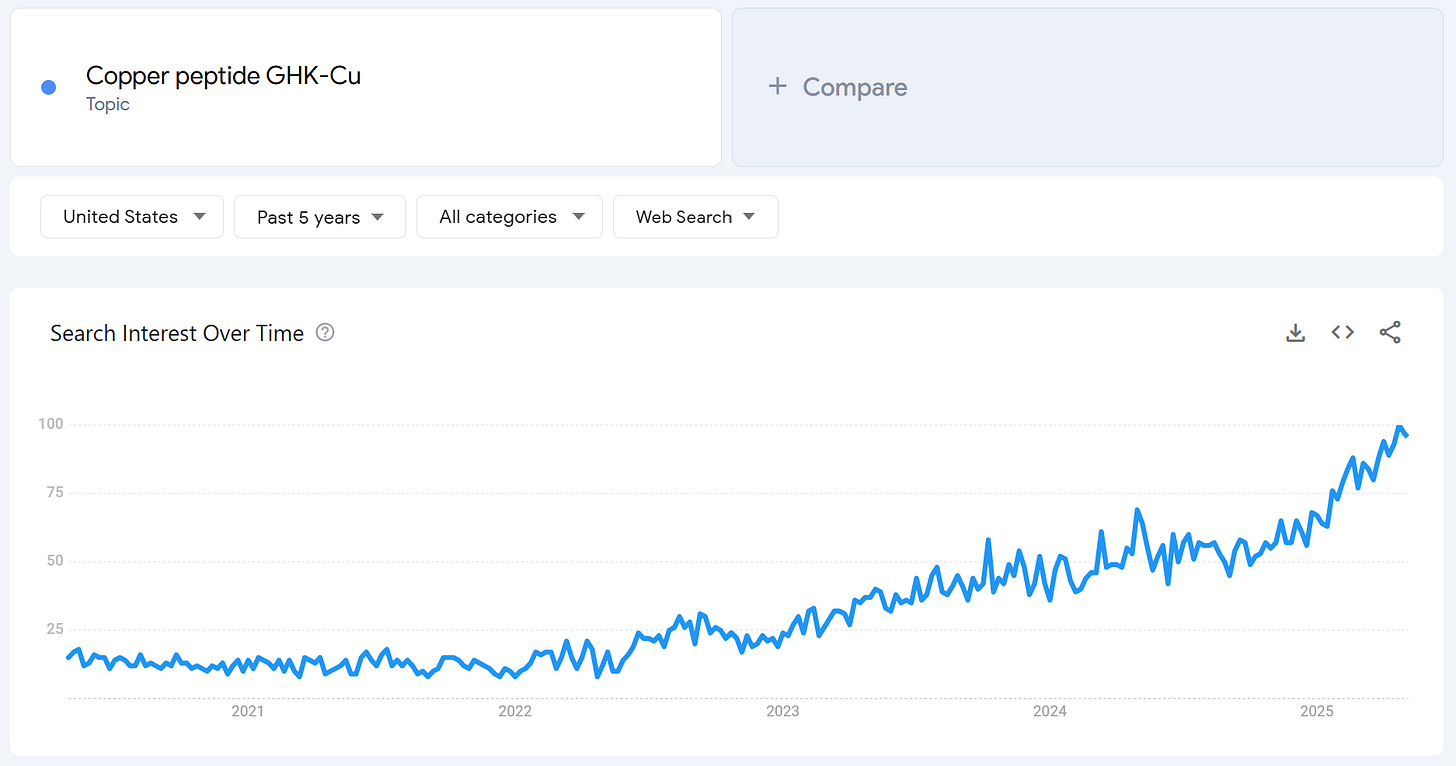9 Health Business Trends To Bet On in 2025 & Beyond
How to take advantage as an early adopter
Everybody wants to know what the next big thing will be. But nobody cares about what never changes. And the latter is a big part of how to determine the former.
The foundation for forecasting future trends lies in recognizing the enduring constants of human nature - the immutable characteristics. The timeless components spanning across generations. Once we drill down into the human psyche & couple with it some anticipated technological shifts - only then can we induce the second & third-order effects.
Here are the 9 health-oriented businesses I’m betting on into the next decade:
#1: Healthy Fast Casual Restaurants
If I were to draw up a general blueprint on what makes a restaurant “healthy fast casual”, here’s where I’d start:
100% seed oil-free
Never reuse any oil
Grass-fed/finished meats
Wild-caught seafood
Reverse-osmosis filtered water
Ice maker cleaned monthly
Minimal food storage in plastic
Cooking done in stainless steel/ceramic pans
Organic ingredients
Seasonal, locally-sourced produce
No plastic cutting boards
Many are willing to pay a premium if they’re even slightly educated on the ongoing health discourse of inflammatory oils & risks of toxin consumption via microplastics, xenoestrogens, or grain-fed meats. Just like we’re willing to venture to Whole Foods or local marketplaces for higher quality, organic products. Same concept only with the added convenience factor.
Some examples we’re starting to see pop up with multiple locations in the US:
Parakeet Café (Southern California)
Aubergine Kitchen (Utah & Arizona)
Springbone Kitchen (NYC)
Roll Play (Washington, DC)
Bolay (Miami)
Within 3-4 years - we’re going to see this model reach the heights of Chipotle level dominance.
#2: Seed Oil-Free Snack Foods
It’s not just the restaurant space making advances. The future of all nutrition is becoming increasingly seed oil-free. What many viewed as a tinfoil hat conspiracy with Dr. Cate Shanahan’s Deep Nutrition in 2008 & her framework of the Hateful Eight has evolved into accepted truth throughout much of the mainstream by now. Old news to many here, but still unbeknownst to majority of population. (Congrats on being out in front. Again.)
The model feels pretty linear by now: typical unhealthy junk food → replace hydrogenated vegetable oil with coconut oil/olive oil/butter/tallow → make it as minimal ingredient as possible → market as seed oil-free product.
Tons of examples here but a few notable ones:
My favorite seed oil-free protein bar. (Save 10% @ checkout with code PHYS10)
Took seed oil slop snack. Replaced canola oil with coconut oil. Simple.
Traditional chips turned into 3-ingredient, seed oil-free chips. Made with beef tallow.
Another healthy spin on traditional potato chips. Made with avocado oil.
#3: Peptide-Based Skincare Products
The Looksmaxing era is only starting to take off. And it’s driven by another relatively simple framework: more visibility → more attention → more insecurities → more manufactured flaws to be addressed.
Let me give a real example that’s representative of the culture. Female in my family - 32 yrs of age. ~70% of her friend group (~30 girls total) has had some form of cosmetic surgery. Lip filler. Botox injections. Nose job. That’s under the age of 35. Now imagine at the age of 45 or 50. Think the insecurity is going to vanish or even diminish with age? Nope - only intensifies from here. “Botox in a bottle” not going anywhere.
The future echoes the theme of many food brands: minimalist. Doing more with less. The routine shifts away from harsh chemicals or aggressive forms of exfoliation and towards gentle, hydration solutions focused on anti-aging & skin barrier function.
And what will serve as the center of gravity for the movement? One of the hottest compounds in the skincare space today - copper peptide (GHK-Cu).
Along with other advanced peptides, retinol alternatives, & new hydration innovations we’ll see more usage of:
Matrixyl → Peptide combo targeting signs of aging (fine lines + wrinkles)
Palmitoyl Tripeptide-38 → Newer Matrixyl that “mimics Botox”
Polyglutamic Acid (PGA) → Holds 4x more water than hyaluronic acid (HA)
Bakuchiol 2.0 → Retinol alternative
#4: Biometrics & Sports Performance Facilities
These are already being leveraged by professional athletes across all sports. Partially why the logic of “today’s best are no better than those decades ago” is a laughable assumption.
Peak Performance Project (P3) based out of Santa Barbara, CA is the prime example - where more than 60% of NBA players train.

The current model will continue to expand (& only improve) for the pros but what we’re referring to here is the opportunity to move down market into the younger athlete cohorts. Think of these as full lifecycle sports performance centers: exercise scientists doing biomechanical assessments, sports psychologists evaluating athletes’ headspaces, sport-specific trainers tailoring coaching to the individual, & PTs administering peptides to enhance recovery times.
Immutable characteristic: Everyone’s son/daughter is the best. Smartest. Height & weight is 99th percentile as a toddler. 99th percentile in everything. Next Feynman. Next Lebron.
If you talk to parents today, you already know. Mentality doesn’t change over time, but new biometric tools give opportunities for parents to access the S-tier sports science facilities and live vicariously through their own kids.
Another vector. Driving this one even further is the average cost of 4-year tuition. In 1963, average annual tuition at a public 4-year college was ~$2,500. Today, that number has climbed 200% (in real terms) to $45,000. As long as the subsidies continue to roll in, don’t expect the gradient to slow here.

Sure - everyone says they want more American manufacturing jobs until they’re asked if they themselves or their sons/daughters should do it. College education isn’t going anywhere. (Hint: The wine mom’s biggest fear is letting the other neighborhood wine moms know her son will be going to 6-month coding bootcamp or masonry school. Not the elitist path to Columbia then McBainsey.)
The gateway to bypassing costs? Athletic scholarships.
#5: Male Hair Loss Health Products
The most painful data for this area is the proliferation of the self-castration pill: finasteride.
The anecdotes of negative 5-alpha reductase inhibitors (5-ARIs) experiences coupled with the practical warnings of sexual dysfunction & mechanistic education of the implications of nuking dihydrotestosterone (DHT) levels (~70% within 24 hrs!) are growing. We see it on X, YouTube, Reddit. Pretty much all major platforms are now waking up to one of the greatest psyops of mainstream health.
Quick side note on this: The DHT connection to hair loss was driven by sketchy research practices from Dr. Julianne Imperato-McGinley who studied a group of males in the Dominican Republic called Guevedoces in 1974. This group of men appeared female at birth but went on to develop male traits during puberty. She discovered they had a 5-ARI deficiency and by association suggested it was in fact DHT, not testosterone, implicated in male pattern baldness. Never tested. Only a mechanistic assumption. Soon after the claim, Merck got their hands on developing the drug & you know the rest of the story from here.
Back to the topic. Despite the ongoing warnings, popularity continues to soar. This just further proves the point of how deeply rooted the fear of hair loss is for so many men. The calculation is simple: “I’m willing to risk normal sexual & cognitive function for my hairline.” Cooked.
Many will continue their transplant pilgrimages to Turkey. But the more practical solution across the lower & middle markets here is a focus on preventative (Hint: think aversion to needles) & emotional support products/services:
Natural shampoos (free from sulfates, parabens, phthalates, dyes)
Hair loss confidence coaches (Yes - seriously.)
Hair supplements (Per supplement industry SOP - trash formulations.)
#6: Telehealth Services
We’ve got a few different vectors acting here:
Growing distrust of centralized medicine
Low barrier to entry for consultation services/access to compounds
Parabolic growth of hyper-insecurity in a magnified attention economy.
Expect these to be broken into three major categories:
#6A: Reproductive Health
Let’s start with a force for good. Companies like Ferta are aiming to restore reproductive health naturally amidst a rapidly declining fertility rate in the West.

Since 2011, we saw a more than double increase in IVF cycles from 163k to 400k today. Despite that, the US fertility rate is still at a record low of 1.6 births/woman - well below the replacement rate of 2.1 births/woman.

As holistic & personalized methods of care continue to explode across the health space, many will shift away from traditional, proximate-cause treatment/pill mill approaches to explore the innovative solutions of new reproductive health startups.
#6B: Enhancement Consultations
On net - another force for the positive. If you asked me a year ago, I had a healthy amount of skepticism for the future of GLP-1 mimetics like semaglutide & retatritude for example. A lot of fear started to brew regarding the loss of skeletal muscle mass & potential shrinkage of cardiac muscle. I’ve since changed my mind on this one.
Just like anything else in the health space, research compounds are a tool. And the tool will only be as effective as the user’s implementation method/adjacent protocol. What we’ve seen over the past year are disparate outcomes of the same compounds. On one end → unhealthy levels of sarcopenia. On the other → improved metabolic health - lowered HbA1cs, improved lipid profiles, reduction in addictive tendencies - all while maintaining most lean body mass.
Any intervention worth pursing has at least some risk profile associated with it. And there is wisdom routed in an old saying (& book title) from Nathanael Stolte:
“Shoot the alligator closest to the boat!”
The most powerful way to mitigate those risks: leveraging the experience of skilled practitioners within this space. Today’s biohacker will be tomorrow’s normie. Most aren’t at the point of trusting any AI model to guide them along. Certainly not where we’re at in the adoption lifecycle either. Tools will be out there and available. But the education of them severely lacking. Those who understand them best will be the practitioners themselves - obviously. Reconstituting peptides. Experimenting with synergy of peptide combinations. Will be a fun landscape to navigate & a highly coveted skillset.
#6C: Health & Looksmaxing Insecurity Quartet
Now we need to swing the pendulum back to the not so good. Any company shilling 5-ARIs (strong causal link to ED), ED medications, & SSRIs should be treated with healthy doses of skepticism. The disclaimer attached to these companies should read something like: “We may lead you down a dark path sexually & psychologically…but we’ll alleviate that to get it back up & modulate your serotonergic system back to baseline.”
Perhaps rather than falling into the telehealth company category, a more accurate description would be an insecurity mill.
Why?
They specialize in all aspects of what we’ll call the Looksmaxxing Quartet - skin, hair loss, sexual health, & weight. The Hims & Ro’s of this space are setting the standard of what that model looks like. You might not like it - but good luck stalling its momentum at this point.
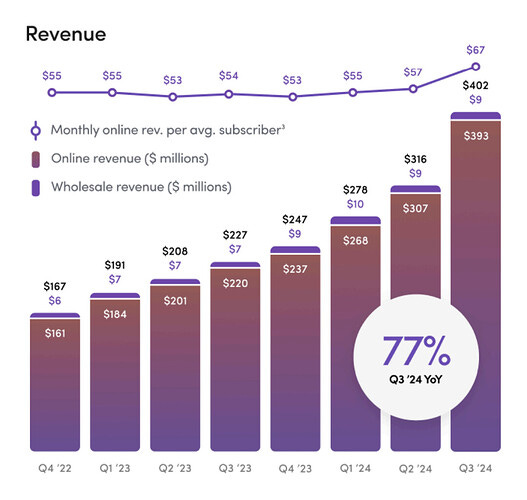
#7: Premium Lifestyle Fitness Clubs
“The weights don’t lift themselves at nicer gyms”
Misses the point. When you opt for a higher quality gym, you’re not buying the opportunity for better muscle growth or increased likelihood of boosting your VO2 max more efficiently. Maybe for the quality of the trainers or equipment. Maybe.
You’re not even signing up for what’s present. You’re buying a membership for what isn’t. And that’s the presence of degenerates. Those at the top have absolutely no patience to be hanging around individuals playing music without headphones. Or squeezing past a dude jumping rope in the middle of the gym with pre-workout spilled all over the floor. Or hair clippings in the locker room. They’re paying to be around other high value individuals. Simple as that. The amenities might attract. But who’s not there enables them to stay awhile.
Add to that - the premium fitness club is a sticky concept. Once you experience the upgrade of a gym/training facility - tough to go back down the ladder to a crumbier gym. And many have already been making the moves.
“What are some examples of this?”
Lifetime & Equinox are your commercial versions that fit nicely. But we need to go even farther up market. Think premier wellness resorts, spas, peptide clinics all wrapped into one gym experience.
A couple examples:
The Houstonian (Houston, TX)
Located on a 27-acre property with a 185k ft2 indoor facility. 8 pickleball courts. 9 tennis courts. 3 outdoor pools. 35+ personal trainers.
Membership: $25,000 initiation fee + $400 monthly fee

Zenergy Health Club & Spa (Sun Valley, ID)
State-of-the-art fitness equipment. Tennis courts. Saltwater lap pool. Full-service spa. Situated in the mountains of Idaho. One of the most elite health centers in the nation.
Membership: $1,200 monthly fee (with an extensive waitlist)

#8: Microplastic-Free Products
Salt. Clothing. Personal care products.
This spans a wide variety of industries. Every few months, some landmark study is released on a new physiological domain affected:
Companies like Ryker have filled one of these voids creating a polyester-free activewear clothing line fading plastic materials and instead opting for merino wool & other natural fibers.

Over 90% of table salt brands contain some form of microplastics. In 2018, a study showed that 36 out of 39 brands tested consisted of plastic debris. Vera Salt is already disrupting this market with its microplastic-free spring salt.
#9: Vice-Adjacent Products
For every movement - a countermovement.
We’re not talking about the full-blown degenerate you know from high school who’s double his weight from a decade ago & devolved into a OF-loving, DraftKings addicted mouth breather. Lost cause.
We’re referencing the dude who has a couple minor negative tendencies here & there. The one who’s self aware & his vice isn’t that much of a vice relatively. He’s willing to make a change kind of guy.
Let’s take the simple example of the Zyn addicted bro. He wants all the good without the bad. Or maybe he just wants to offset the potential toxicity at a minimum.
Many such cases of our example. And there’s one unprecedented product to rule this space soon - Aurenza.

That said - many other opportunities remain untouched as counters to the degen signal.
Alright that’s a wrap for this week. Giving away a lot of the sauce on the stack here lately. Time for you all to capitalize.
Stay healthy & we’ll see you next week.
Your friend,
BTP
***Disclaimer: The information provided by BowTiedPhys is for educational purposes only. This content is not intended to be a substitute for professional medical advice, diagnosis, or treatment of any kind. BowTiedPhys is not a licensed medical provider. Prior to making any changes to your health protocols, consult a licensed healthcare professional. Some of the links in this post may be affiliate links - BowTiedPhys may earn a commission at no additional cost to you. This commission helps support our work and allows us to continue providing valuable content to our valued subscription members.***



![Order Parakeet Cafe - San Diego, CA Menu Delivery [Menu & Prices] | San Diego - DoorDash Order Parakeet Cafe - San Diego, CA Menu Delivery [Menu & Prices] | San Diego - DoorDash](https://substackcdn.com/image/fetch/$s_!hP2X!,w_1456,c_limit,f_auto,q_auto:good,fl_progressive:steep/https%3A%2F%2Fsubstack-post-media.s3.amazonaws.com%2Fpublic%2Fimages%2F6dec6b37-011d-4c02-94f6-5fa81befea16_441x400.jpeg)
